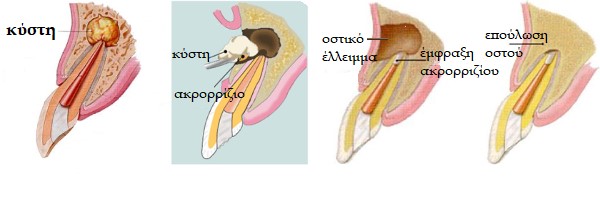
Removal of frenula

What Are Jaw Cysts?
Jaw cysts are pathological cavities that form within the jaw bones, containing fluid or viscous material and lined by epithelium. They are often associated with:
- Dental infections or decayed teeth.
- Impacted teeth (e.g., wisdom teeth).
- Trauma or pathological conditions.
Congenital abnormalities or genetic disorders.
Although cysts are benign, early diagnosis and treatment are essential to prevent complications

What Are Jaw Cysts?
Jaw cysts are pathological cavities that form within the jaw bones, containing fluid or viscous material and lined by epithelium. They are often associated with:
- Dental infections or decayed teeth.
- Impacted teeth (e.g., wisdom teeth).
- Trauma or pathological conditions.
Congenital abnormalities or genetic disorders.
Although cysts are benign, early diagnosis and treatment are essential to prevent complications

What Are Jaw Cysts?
Jaw cysts are pathological cavities that form within the jaw bones, containing fluid or viscous material and lined by epithelium. They are often associated with:
- Dental infections or decayed teeth.
- Impacted teeth (e.g., wisdom teeth).
- Trauma or pathological conditions.
Congenital abnormalities or genetic disorders.
Although cysts are benign, early diagnosis and treatment are essential to prevent complications

What Are the Symptoms of Jaw Cysts?
Jaw cysts, while initially asymptomatic, can cause a number of problems if left untreated. Here are the main problems that can occur:
- Bone erosion: As cysts grow in size, they can cause destruction of the bone tissue around them. This leads to weakening of the jaw, increasing the risk of fracture, even with slight pressure or trauma.
- Tooth displacement: Cysts can put pressure on adjacent teeth, causing them to move or be lost.
- Pain and swelling: Although many cysts are asymptomatic initially, as they grow they can cause pain, a feeling of pressure, and swelling in the jaw or face. Pain may be due to infection or inflammation associated with the cyst.
- Infection: The presence of a cyst increases the risk of infection in the area. Infection can lead to abscesses or inflammation, accompanied by pain, swelling, fever, and pus discharge.
- Malignancy: In rare cases, some can develop into malignant tumors. Early diagnosis and removal is important to prevent such serious complications.
- Nerve Pressure: If the cyst is located near nerve structures (e.g., the inferior alveolar nerve), it can cause numbness, paresthesias, or even permanent nerve damage, affecting sensation in the lip, chin, or jaw area.

What Are the Symptoms of Jaw Cysts?
Jaw cysts, while initially asymptomatic, can cause a number of problems if left untreated. Here are the main problems that can occur:
- Bone erosion: As cysts grow in size, they can cause destruction of the bone tissue around them. This leads to weakening of the jaw, increasing the risk of fracture, even with slight pressure or trauma.
- Tooth displacement: Cysts can put pressure on adjacent teeth, causing them to move or be lost.
- Pain and swelling: Although many cysts are asymptomatic initially, as they grow they can cause pain, a feeling of pressure, and swelling in the jaw or face. Pain may be due to infection or inflammation associated with the cyst.
- Infection: The presence of a cyst increases the risk of infection in the area. Infection can lead to abscesses or inflammation, accompanied by pain, swelling, fever, and pus discharge.
- Malignancy: In rare cases, some can develop into malignant tumors. Early diagnosis and removal is important to prevent such serious complications.
- Nerve Pressure: If the cyst is located near nerve structures (e.g., the inferior alveolar nerve), it can cause numbness, paresthesias, or even permanent nerve damage, affecting sensation in the lip, chin, or jaw area.

What Are the Symptoms of Jaw Cysts?
Jaw cysts, while initially asymptomatic, can cause a number of problems if left untreated. Here are the main problems that can occur:
- Bone erosion: As cysts grow in size, they can cause destruction of the bone tissue around them. This leads to weakening of the jaw, increasing the risk of fracture, even with slight pressure or trauma.
- Tooth displacement: Cysts can put pressure on adjacent teeth, causing them to move or be lost.
- Pain and swelling: Although many cysts are asymptomatic initially, as they grow they can cause pain, a feeling of pressure, and swelling in the jaw or face. Pain may be due to infection or inflammation associated with the cyst.
- Infection: The presence of a cyst increases the risk of infection in the area. Infection can lead to abscesses or inflammation, accompanied by pain, swelling, fever, and pus discharge.
- Malignancy: In rare cases, some can develop into malignant tumors. Early diagnosis and removal is important to prevent such serious complications.
- Nerve Pressure: If the cyst is located near nerve structures (e.g., the inferior alveolar nerve), it can cause numbness, paresthesias, or even permanent nerve damage, affecting sensation in the lip, chin, or jaw area.



What is the Treatment for Cysts?
Treatment of jaw cysts depends on the size, type, location of the cyst, and the symptoms it causes. The main treatment options include surgery. The main treatment methods are presented below:
- Enucleation
This is the most common treatment method, where the cyst is removed along with its covering (capsule) to prevent recurrence. The procedure is performed under local or general anesthesia depending on the case and includes the following stages:
- Preoperative Evaluation: Taking x-rays or CT scans to determine the size, location of the cyst, and identifying adjacent teeth or other benign anatomical structures that may be affected.
- Surgical Removal: Opening the bone to completely remove the cyst and, in some cases, removing an adjacent tooth.
- Cleaning and Restoration: Careful cleaning of the area and possible placement of materials for bone regeneration.
- Suturing
- Marsupialization
Applied to large cysts or in cases where enucleation is difficult or dangerous due to the location of the cyst (near nerves). It involves creating a permanent opening so that the contents of the cyst can continuously drain and reduce its size. The cyst remains open and enucleation usually follows in a second stage, when the cyst has shrunk.
- Treatment of Recurrences
For cysts that have an increased risk of recurrence (such as keratin cysts), a more aggressive approach may be required, such as removing part of the bone around the cyst or applying chemicals to the area to reduce the likelihood of recurrence.

What is the Treatment for Cysts?
Treatment of jaw cysts depends on the size, type, location of the cyst, and the symptoms it causes. The main treatment options include surgery. The main treatment methods are presented below:
- Enucleation
This is the most common treatment method, where the cyst is removed along with its covering (capsule) to prevent recurrence. The procedure is performed under local or general anesthesia depending on the case and includes the following stages:
- Preoperative Evaluation: Taking x-rays or CT scans to determine the size, location of the cyst, and identifying adjacent teeth or other benign anatomical structures that may be affected.
- Surgical Removal: Opening the bone to completely remove the cyst and, in some cases, removing an adjacent tooth.
- Cleaning and Restoration: Careful cleaning of the area and possible placement of materials for bone regeneration.
- Suturing
- Marsupialization
Applied to large cysts or in cases where enucleation is difficult or dangerous due to the location of the cyst (near nerves). It involves creating a permanent opening so that the contents of the cyst can continuously drain and reduce its size. The cyst remains open and enucleation usually follows in a second stage, when the cyst has shrunk.
- Treatment of Recurrences
For cysts that have an increased risk of recurrence (such as keratin cysts), a more aggressive approach may be required, such as removing part of the bone around the cyst or applying chemicals to the area to reduce the likelihood of recurrence.

What is the Treatment for Cysts?
Treatment of jaw cysts depends on the size, type, location of the cyst, and the symptoms it causes. The main treatment options include surgery. The main treatment methods are presented below:
- Enucleation
This is the most common treatment method, where the cyst is removed along with its covering (capsule) to prevent recurrence. The procedure is performed under local or general anesthesia depending on the case and includes the following stages:
- Preoperative Evaluation: Taking x-rays or CT scans to determine the size, location of the cyst, and identifying adjacent teeth or other benign anatomical structures that may be affected.
- Surgical Removal: Opening the bone to completely remove the cyst and, in some cases, removing an adjacent tooth.
- Cleaning and Restoration: Careful cleaning of the area and possible placement of materials for bone regeneration.
- Suturing
- Marsupialization
Applied to large cysts or in cases where enucleation is difficult or dangerous due to the location of the cyst (near nerves). It involves creating a permanent opening so that the contents of the cyst can continuously drain and reduce its size. The cyst remains open and enucleation usually follows in a second stage, when the cyst has shrunk.
- Treatment of Recurrences
For cysts that have an increased risk of recurrence (such as keratin cysts), a more aggressive approach may be required, such as removing part of the bone around the cyst or applying chemicals to the area to reduce the likelihood of recurrence.



